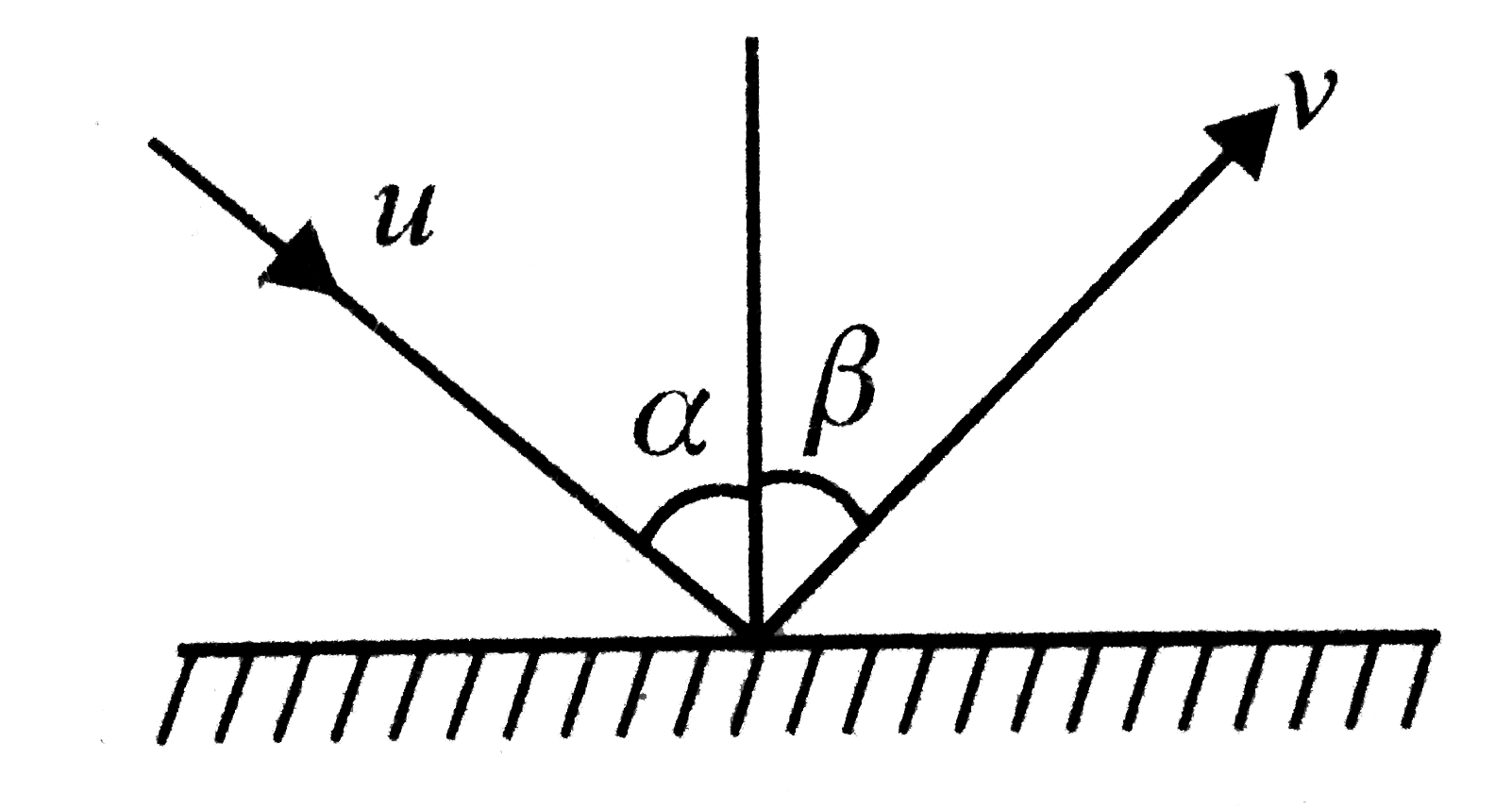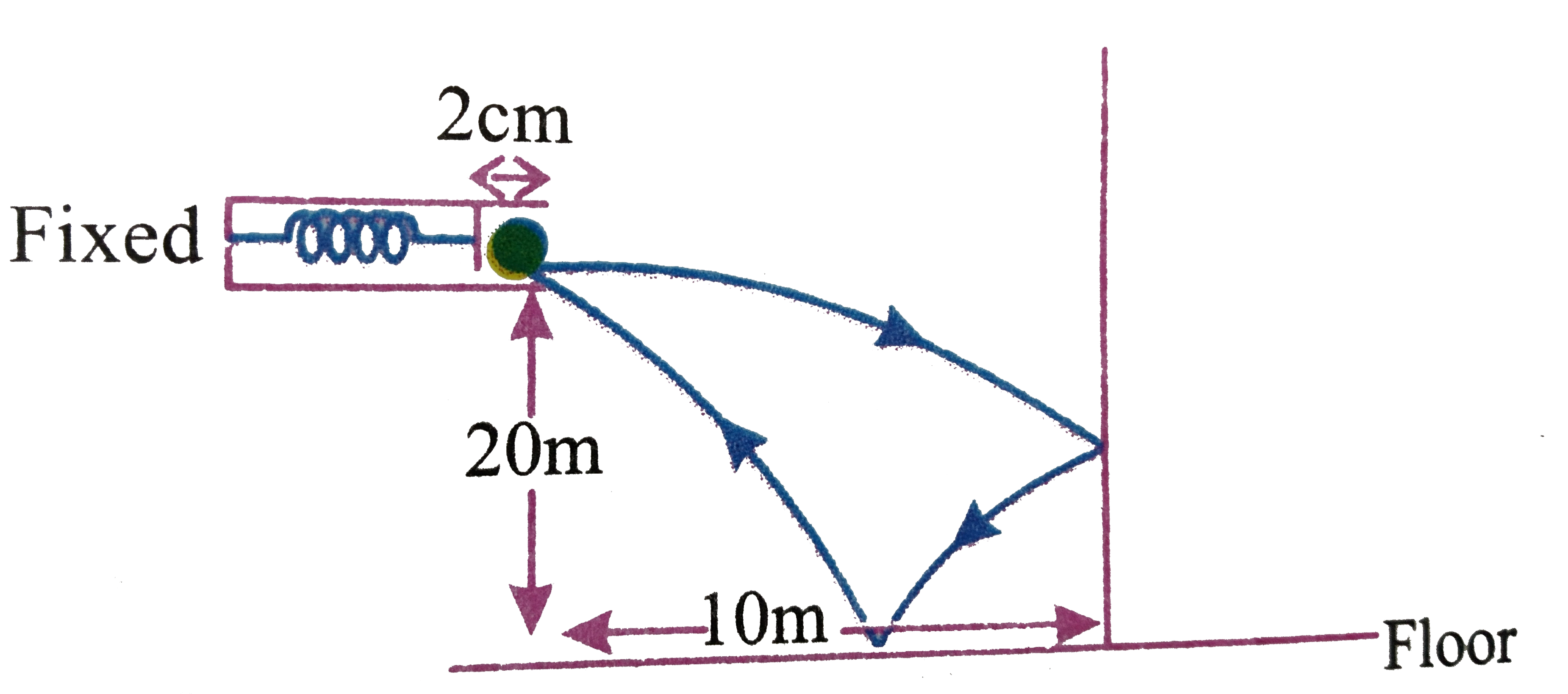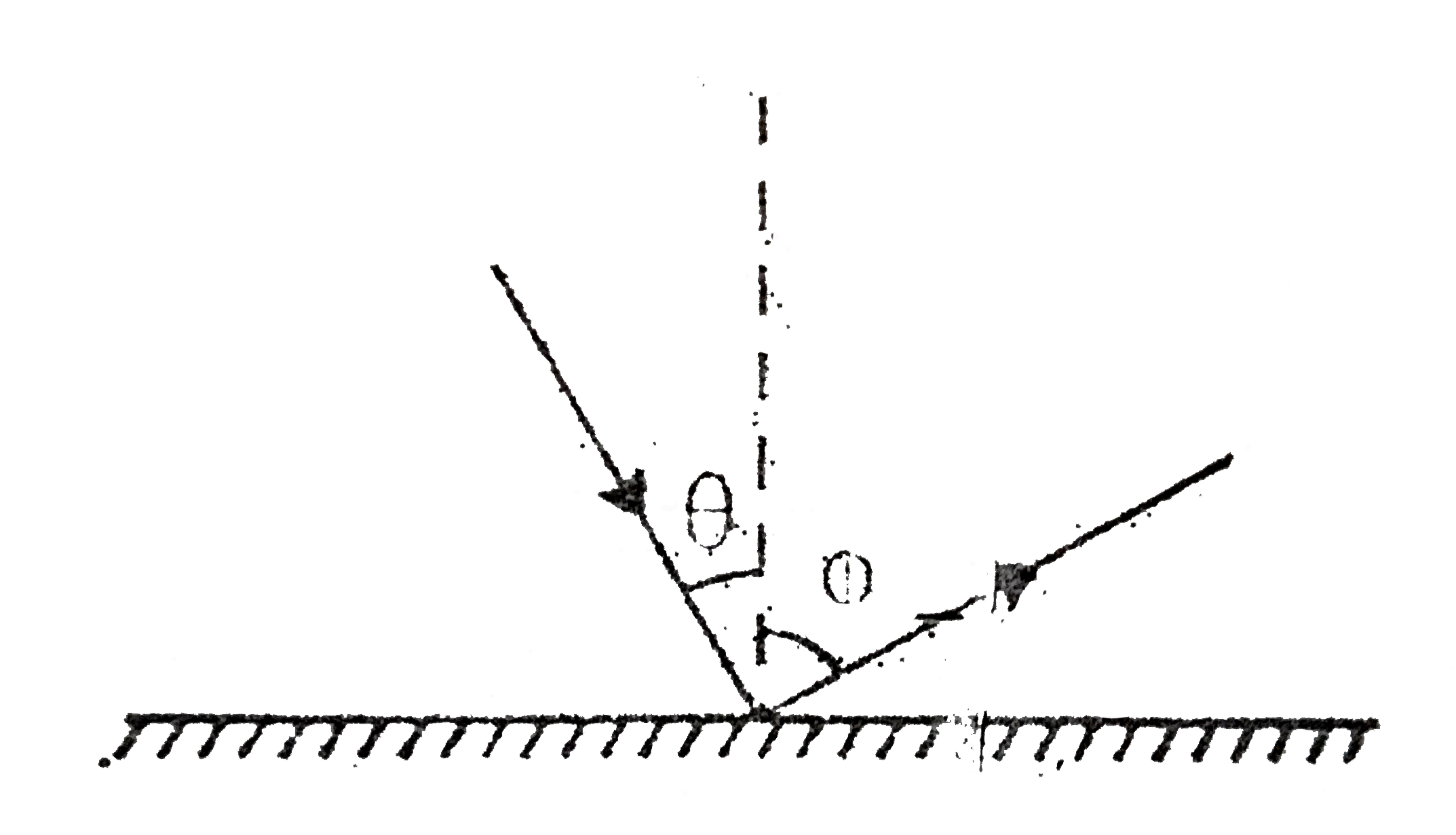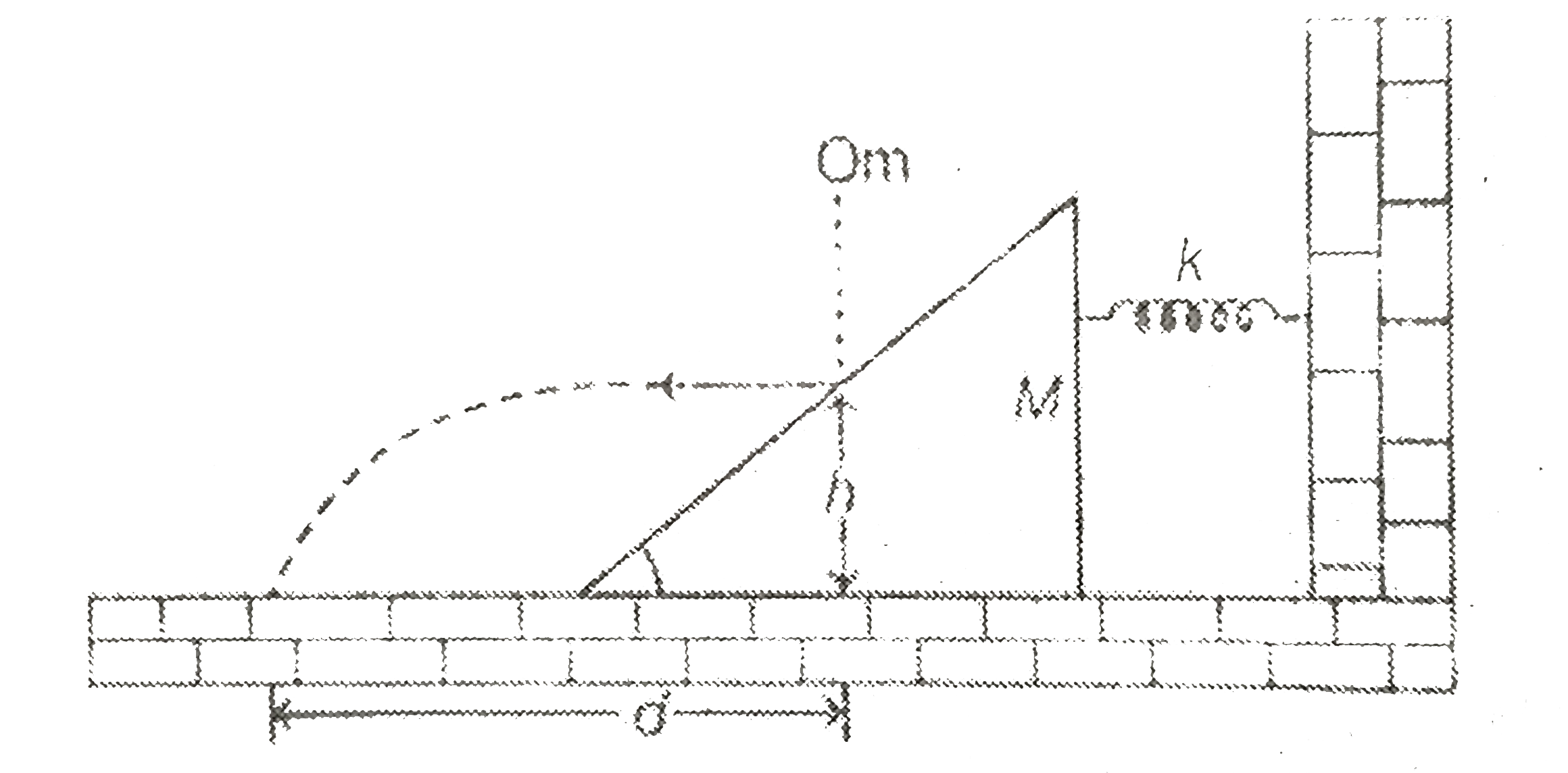A ball strikes a smooth horizontal floor obliquely and rebounds inelastically.
The kinetic energy of the ball just after hitting the floor is equal to the potential energy of the ball at its maximum height alter rebound.
Total energy of the ball is not conserved.
The angle of rebound with the vertical is greater than the angle of incidence.
None of the above.
The correct Answer is:B, C
Let the ball stirke the floor at angle alpha with the vertical and velocity at the instant of striking the floor be u and let the ball bound with velocilty v at angle β with the vertical as shown in figure

Since the floor is smooth, therefore horizontal component of velocity remains unchange. Hence
vsinβ=usinα...............i
Since, the floor is inelastic, therfore normal component of velocity just after the collision is less than that just before the collision.hence.
vcosβ<cosα........ii
Diving eqn i by eqn ii tanβ>tanα or β>α
hence option c correct.
Since the ball has a horizontal component of velocity, therefore the at highes point it kinetic energy is not equal to zero.
it means, at highest point, potential energy of the ball is less than the kinetic energy just after reboud. Hence option a is incorrect.
Since the floor is inelastic, therefore there is some loss of energy during the collision. hence, the total energy of the ball does not remain conserved. So, option b is also correct.
Topper's Solved these Questions
- BOOK - CENGAGE PHYSICSCHAPTER - CENTRE OF MASSEXERCISE - Assertion - Reasoning2videos
CENTRE OF MASS
- BOOK - CENGAGE PHYSICSCHAPTER - CENTRE OF MASSEXERCISE - Linked Comprehension105videos
CENTRE OF MASS
- BOOK - CENGAGE PHYSICSCHAPTER - CENTRE OF MASSEXERCISE - Single Correct141videos
CENTRE OF MASS
- BOOK - CENGAGE PHYSICSCHAPTER - CALORIMETRYEXERCISE - Solved Example13videos
CALORIMETRY
- BOOK - CENGAGE PHYSICSCHAPTER - DIMENSIONS & MEASUREMENTEXERCISE - Integer2videos
DIMENSIONS & MEASUREMENT
Similar Questions
A ball strikes a smooth horizontal floor at an angle α with the normal to the surface and after rebounding from the floor , ball moves at an angle β with the normal . Find the relation between α and β if coefficient of elasticity is e .
View SolutionA small ball of mass 1kg is released from a smooth horizontal pipe containing a spring fixed at a height of 20m and 10m away from a vertical wall as shown in the figure. The initial compression of a spring is 2cm and it strikes a smooth vertical wall and smooth horizontal floor repeatedly and elastically as shown. The time period of one complete oscillation (g=10m/s2). (The ball do not collide with walls of the pipe ) is P+π50Q, the value of Q−P is__________
 View Solution
View Solution
Knowledge Check
- Question 1 - Select One
In the figure shown a particle P strikes the inclined smooth plane horizontally and rebounds vertically if the angle θ is 60∘ then the coefficient of restitution is:
 A1/3B1/√2C1/2D1
A1/3B1/√2C1/2D1 - Question 2 - Select One
A ball of mass m=1kg strikes a smooth horizontal floor as shown in figure. The impulse exerted on the floor is
 A(a) 6.25NsB(b) 1.76NsC(c) 7.8NsD(d) 2.2Ns
A(a) 6.25NsB(b) 1.76NsC(c) 7.8NsD(d) 2.2Ns - Question 3 - Select One
A ball strikes a smooth horizontal ground at an angle of 45∘ with the vertical. What cannot be the possible angle of its velocity with the vertical after the collisioin. (Assume e≤1).
A45∘B30∘C53∘D60∘
A particle strikes a smooth horizontal surface at an angle θ>0 and it rebounds at an angle ϕ as shown
 View Solution
View SolutionA ball is projected from a point on a smooth horizontal floor at an angle θ with the horizontal . Speed of projection is u . Ball collides with the floor several times . Find the total time and horizontal distance covered by the ball .
View SolutionA ball moving with velocity u strikes a smooth horizontal floor at an angle α with the normal to the surface at the point of contact . After collision , ball moves with velocity v at an angle β with the normal . Assume e as the coefficient of restitution .
View SolutionA ball strikes a horizontal floor at 45∘. 25% of its kinetic energy is lost in collision. Find the cofficient of resultation
View SolutionA ball of mass m when dropped from certain height as shown in diagram, strikes a wedge kept on smooth horizontal surface and move horizontally just after impact. If the ball strikes the ground at a distance d from its initial line of fall, thenthe amplitude of oscillation of wedge after being hit by the ball will be
 View Solution
View Solution
